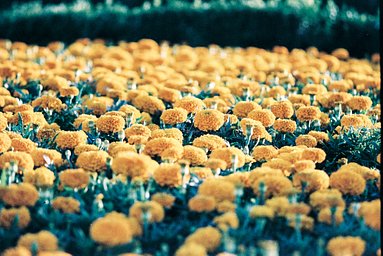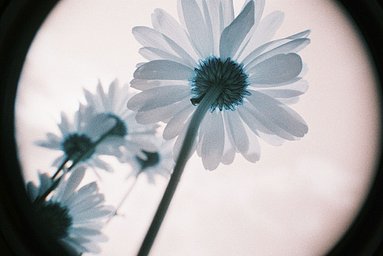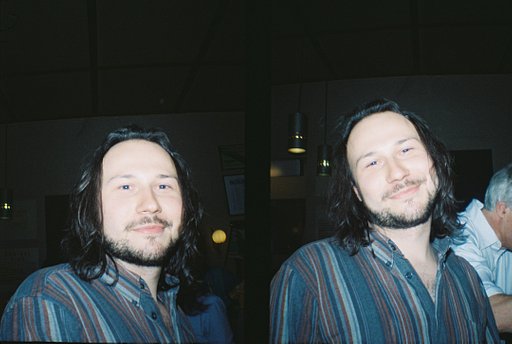What are LomoChrome films?
LomoChrome is the name given to some of Lomography’s more experimental film stocks. The LomoChrome range offers users the chance to create incredible images with otherworldly colors without the need for digital manipulation or darkroom knowledge. Despite the color-shifting results of some of these films in the LomoChrome range, they all have a standard C-41 development process.
There are currently four LomoChrome film stocks available: LomoChrome Purple, LomoChrome Turquoise, LomoChrome Metropolis, and LomoChrome Color ‘92. These are all available in 35 mm, 120 and 110 format!
LomoChrome Purple
LomoChrome Purple was first released in 2013, and was originally inspired by Kodak Aerochrome, a color infrared film that was discontinued in 2009. LomoChrome Purple offers a similar color spectrum, transforming shades of green and yellow to vivid pinks and purples, and giving users a whole new perspective.


This is also the origin of the ‘chrome’ in the name of our LomoChrome films, as we wanted to give a nod to the Aerochrome film, despite the term traditionally being associated with slide (E6) development.
There have been several iterations of LomoChrome Purple over the years, as we have tweaked and refined the formula to give the most beautiful and bizarre results. Our latest edition is the LomoChrome Purple Pétillant.
LomoChrome Turquoise
The response from the analogue community to the LomoChrome Purple film was incredible and we realised there was a strong appetite for unconventional and experimental film.
So in 2015 we introduced the second member of our color shifting film family, the psychedelic LomoChrome Turquoise. This film’s unique formula also transforms reality, turning warm colors into beautiful blues and skies to a dramatic orange.


LomoChrome Turquoise is a wondrous film that gives magical results in varied conditions but especially shines on bright sunny days.
LomoChrome Metropolis
The next edition to the LomoChrome family was LomoChrome Metropolis which we launched in 2019 through a kickstarter campaign. Metropolis offers a more true to life color palette than Purple or Turquoise, but still has a unique aesthetic. It’s desaturated colors and high contrast produces photos with a punch and makes it instantly recognisable, and completely different from other color negative film stocks on the market.


All three of these LomoChrome film stocks mentioned so far, Purple, Turquoise and Metropolis, have a varied recommended ISO rating of between 100 and 400. This puts even more creativity and control in the hands of the photographer, as results vary considerably depending on how you choose to rate and shoot the film.
LomoChrome Color '92
A color negative film with a Lomographic twist, LomoChrome Color '92 is our newest film, designed to satisfy our nostalgia for the 90s. The name is also a reference to the year Lomography was founded, and as the film was launched in the year of our 30th anniversary, it was especially appropriate.
The beautiful pastel undertones combined with prominent grain has quickly made this film a new fan favorite. If you love a dynamic color palette and retro charm, LomoChrome Color '92 may be the film for you.




Anything missing?
Can’t find an answer to your question? Or do you have some useful advice to add to one of our courses? We want to build the world’s largest analogue learning space, so please send any further requests or information to school@lomography.com and we’ll take a look!
Photos From Other Students
Do you want to see your photos featured here for all Lomo School students to see? If you think your photos fit this article just tag them with “lomochrome”. We take a look at all these photos and select our favorites. See all photos tagged with “lomochrome” here.
More Courses
-
What are the different photographic film formats?
The three main types of film format are 35 mm, medium format and large format. More unusual formats also exist such as 110 and 127.
-
What is tungsten film?
Most standard films are daylight-balanced, so they tend to capture the yellow-orange cast from tungsten lights. To address this, tungsten film was created to produce color-correct images taken under artificial lighting.
-
What is 126 film?
126 film was launched by Kodak in 1963 as a way to simplify the process of loading and unloading film into cameras. Its name comes from the negatives’ dimension of 26.5 mm square. Although companies ceased mass production of 126 format around 2007 to 2008, its cartridge is still known and loved today.
-
What is APS film?
Advanced Photo System or APS film was introduced in 1996 as a “high-tech” or modern alternative to the 126 and 110 film formats. It was 24 mm wide and it introduced many innovations, like the ability to choose exposure lengths and print sizes. Production of new APS film was ceased in 2011.
-
What is the difference between panchromatic and orthochromatic film?
Orthochromatic film is made with blue-sensitive silver halide crystals, while panchromatic film adds other chemicals to increase the film’s sensitivity into the green and red parts of the spectrum.
-
What is a half-frame film camera?
Half-frame cameras shoot 18×24 mm photographs on 35 mm film. This means you can take up to 72 images on one single roll and save a lot of film!
-
Where to get film developed?
There are a lot of places that can process and develop your 35 mm color negative film such as local drugstores or one-hour photo labs.
-
What is the processing method for Redscale and LomoChrome films?
All Lomography color films are processed using C-41 chemicals. This includes Lomography RedScale XR and our popular range of color-shifting LomoChrome films – LomoChrome Purple, LomoChrome Metropolis and LomoChrome Turquoise
-
What is cross processing?
Cross processing (or “X-pro”) is the procedure of deliberately processing film in a chemical solution intended for a different type of film. As each chemical mixture is optimized for a specific kind of film, you will get unpredictable results when combining them differently.


























